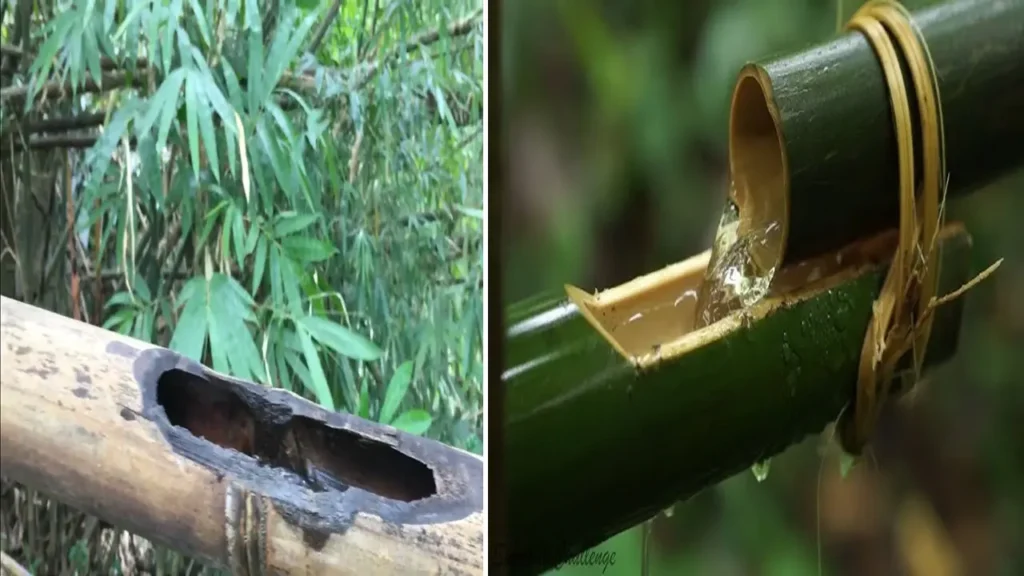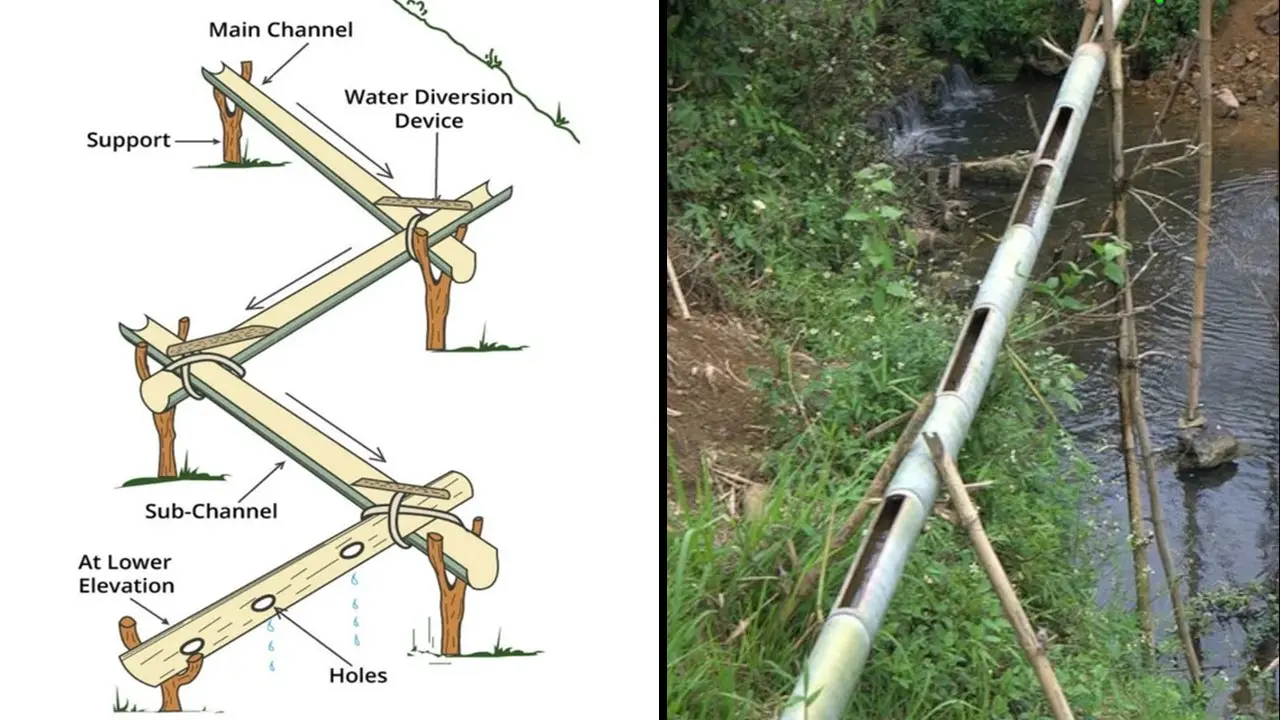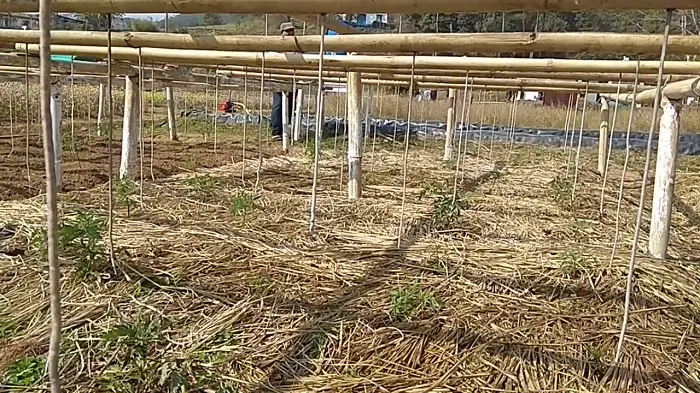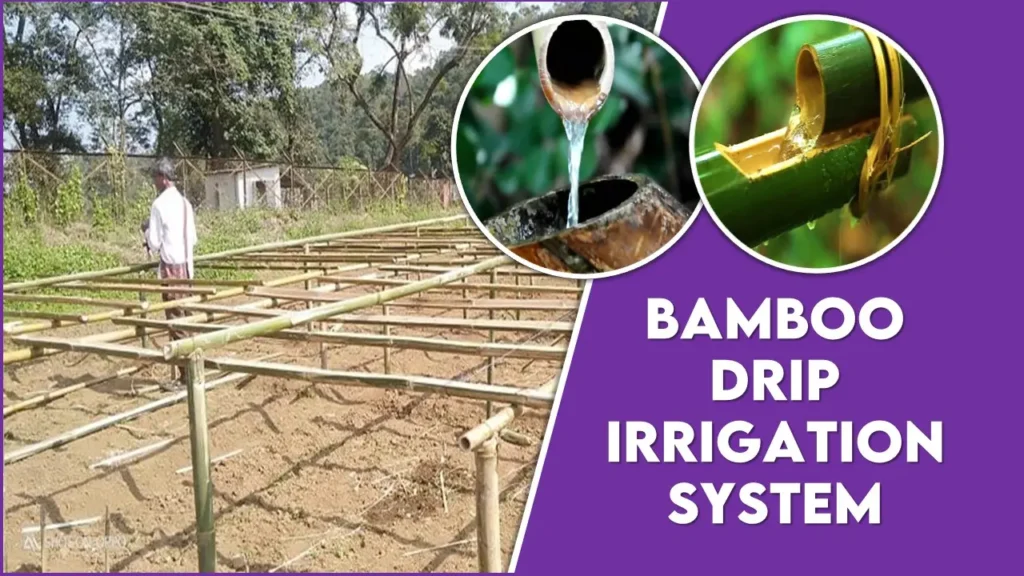You must have probably heard about the drip irrigation system. A system that utilizes pipes, pumps, and ejectors to form a network of water distribution systems that is the most efficient irrigation system in terms of water conservation to date. But, what do you know about bamboo drip irrigation system?
Most probably, this might be the first time you have heard about a bamboo drip irrigation system. The next question that comes to your mind is discussed below.
What is Bamboo Drip Irrigation System?
The Bamboo Drip Irrigation system is a 200-year-old indigenous technique used by tribal farmers in Meghalaya, India. It’s a gravity-based irrigation system that uses bamboo pipes to tap water from springs and streams.
The system starts with a main bamboo channel that taps water from an uphill source. This water is then regulated through a complex network of secondary and tertiary bamboo channels, reducing the flow from 18-20 liters per minute to 20-80 drops per minute at the plant site. Bamboos of varying diameters are used to build the channels, support structures, and diversion pipes. The system is built with such precision that water wastage due to leakage is minimal.
This system is particularly effective in the hilly terrain of Meghalaya, where the soil has poor water retention capacity and ground channels for water diversion aren’t feasible. Now that you have understood the basics of a bamboo drip irrigation system, we will in detail explain the bamboo drip irrigation system, the features of the bamboo drip irrigation system, its advantages, disadvantages, the model, and much more.
Bamboo Drip Irrigation System
Where is the Bamboo Drip System Practiced?
The Bamboo Drip Irrigation system is primarily practiced in the northeastern states of India, particularly in Meghalaya. It’s a traditional method used by tribal farmers in the Khasi and Jaintia hills. The system is especially prevalent in the ‘war’ areas of Meghalaya, more so in the ‘war’ Jaintia hills than in the ‘war’ Khasi hills. It also extends to the Muktapur region bordering Bangladesh.
This ingenious system is well-suited to the hilly and rocky terrain of these regions, where the soil has poor water retention capacity and ground channels for water diversion aren’t feasible. The system is also found in parts of the northern plains and the Bhutan border area.
How to Construct Bamboo Drip Irrigation System
Basic Requirements
Constructing a bamboo drip irrigation system requires the following basic tools and materials:
- Bamboo Strands: These are used to build the channels, support structures, and diversion pipes. Bamboos of varying diameters are used depending on the requirement.
- Forked Branches: These are used to hold the bamboo channels above the ground.
- Smaller Bamboo Shoots: These are used for the channel diversions.
- Thin Bamboo Strips: These are used to lash one stretch of channel to another.
- Dao: A type of local axe, used to cut and shape the bamboo.
- Chisels: These are used to build the bamboo network.
- Labor: Two laborers can construct a network covering 1 hectare of land in about 15 days.
The construction is based on a simple rule of thumb — the ratio of the diameter of the primary channel to the tertiary channel determines the quantity of water that will reach the trees. The system is built with such skill that water wastage by leakage is minimal.

Design of the Bamboo Drip Irrigation System
Let’s dive into the design of the bamboo drip irrigation system.
- The system starts with identifying a water source, usually a stream or a spring located uphill. The system works on gravity, so the water source needs to be at a higher elevation than the area where the water is needed.
- The main bamboo channel is constructed from a large-diameter bamboo.
- The main channel is held above the ground by Y-shaped sticks made of bamboo or wood. This allows the water to flow naturally due to gravity.
- From the main channel, the water is distributed to secondary and tertiary channels. These channels are made from smaller diameter bamboo and serve to further divide the water flow.
- The water flow in the channels is regulated by manipulating the position of the bamboo pipes. If the pipes need to cross a road or another obstacle, they are raised higher off the ground.
- At the end of the network, the water is delivered to the base of the plants. The last section of the channel is designed to slow down the water flow, allowing it to drip slowly, drop by drop, right at the root of the plant.
About 18-20 liters of water entering the main channel per minute gets reduced to 20-80 drops per minute at the end of the network. So, that’s the design of the bamboo drip irrigation system in a nutshell.

Also Read
The Method of Construction of the Bamboo Drip Irrigation System
Step 1
The first step in constructing a bamboo drip irrigation system is to identify a water source. This could be a stream or a spring located uphill. The system works on gravity, so the water source needs to be at a higher elevation than the area where the water is needed.
Step 2
Once the water source is identified, the next step is to build the main bamboo channel. This channel is made from a large-diameter bamboo and serves as the primary conduit for the water. The main channel can run for hundreds of meters, and in some cases, even a few kilometers, depending on the distance between the water source and the plantation.
The main bamboo channel is supported above the ground by Y-shaped sticks made of bamboo or wood. The channel is constructed in such a way that it slopes downwards, allowing the water to flow naturally due to gravity.
Step 3
From the main channel, the water is then distributed to secondary and tertiary channels. These channels are made from smaller diameter bamboo and serve to further divide the water flow. The construction of these channels is a meticulous process, requiring precision and skill. The channels are lashed together using thin bamboo strips, and the joints are made watertight to prevent leakage.
Step 4
The water flow in the channels is regulated by manipulating the position of the bamboo pipes. If the pipes need to cross a road or another obstacle, they are raised higher off the ground. The system is designed in such a way that about 18-20 liters of water entering the main channel gets reduced to 20-80 drops per minute at the plant site.
Step 5
At the end of the network, the water is delivered to the base of the plants. The last section of the channel is designed to slow down the water flow, allowing it to drip slowly, drop by drop, right at the root of the plant. This not only ensures that the plant gets the water it needs but also minimizes water wastage through evaporation or runoff.
The construction of a bamboo drip irrigation system is a labor-intensive process. It is estimated that two laborers can construct a network covering 1 hectare of land in about 15 days. However, once constructed, the system requires minimal maintenance and can last for many years.

Advantages of Bamboo Drip Irrigation System
The Bamboo Drip Irrigation system has several advantages:
- The system is designed to deliver water directly to the base of the plants, reducing evaporation and runoff. It’s estimated that 18-20 liters of water per minute entering the main channel gets reduced to 20-80 drops per minute at the end of the network. This ensures efficient use of water.
- The system is made from bamboo, a natural, local, and inexpensive material.
- The construction of the system is so precise that water wastage due to leakage is minimal. This increases crop yield with less water.
- The system is adaptable to the hilly and rocky terrain of regions like Meghalaya, where the soil has poor water retention capacity.
- Once constructed, the system requires minimal maintenance and can last for many years.
- The system is fully automated once set up. It doesn’t require constant monitoring or manual intervention to ensure its operation.
Disadvantages of the Bamboo Drip Irrigation System
While the Bamboo Drip Irrigation system has numerous advantages, it also comes with a set of disadvantages:
- The system relies heavily on the availability of water from a natural source like a stream or a spring. In times of drought or reduced rainfall, the system may not function optimally due to a lack of water.
- Although the initial setup cost of the system is low, it requires regular maintenance. The bamboo channels can get damaged over time due to weather conditions or pest attacks, requiring replacement or repair.
- The small holes in the bamboo channels, which allow the water to drip out, can get clogged due to sediment or debris in the water.
- Bamboo stems are vulnerable to wet climatic conditions. They can rot or get infested by pests, affecting the longevity and effectiveness of the system.
- The system delivers water directly to the base of the plants, restricting the wetted area to a small root zone. This may not be suitable for crops that have a wide root spread or those that require a lot of water.
- The system works best in hilly or sloping terrains where gravity can be used to transport the water. In flat or low-lying areas, the system may not work as effectively.
- The system is best suited for small-scale farming or gardening.
Also Read
Conclusion
The bamboo drip irrigation system is practiced in the Northeastern states of India (Meghalaya), Bangladesh, and Bhutan. The system consists of interconnected networks of bamboo poles that utilize gravity for irrigation. The technological prowess employed in the construction of the bamboo drip irrigation system is mesmerizing and resembles the advanced irrigation technologies of today. The whole system is completely free of cost but requires intensive labor.
Latest Post
- November Issue 2025- Times of Agriculture Magazine
- Punjab & Sind Bank Introduces Special Program to Support Food and Agro-Processing Sector
- Beyond Classrooms and Gardens: How a Professor Turned His Passion into Purpose
- October Issue 2025- Times of Agriculture Magazine
- Top 10 Pesticide Companies in the World
- September Issue 2025- Times of Agriculture Magazine
- Top 15 Fertilizer Companies in the World
- Top 10 Vegetable Farming Profit Per Acre in India
- August 2025 : Times of Agriculture Magazine (AgriVoltaics Farming)











